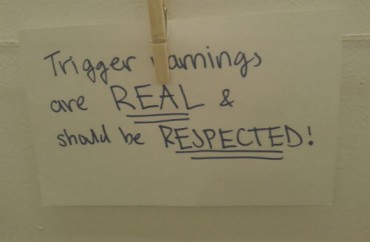
But it’s intended to just promote debate
The purpose of an art installation at Barnard College that appears to celebrate trigger warnings has been misunderstood by some students who viewed it.
That’s according to the trigger-warning wall’s creator, who initially told The College Fix it was intended to create “a space for dialogue” but did not respond to a further request for clarification.
The brainchild of the Collective Advocacy Project, formed only a year ago as a subgroup of the college’s Writing and Speaking Centers, the wall was intended to “promote dialogue and empower student voices,” project co-coordinator Skyler Samuelson told The Fix in a subsequent statement.
The project’s leaders hold weekly meetings in which “clashes of minds” are the norm, Samuelson said. Some of their discussion questions: “Is the discussion and sharing of ideas a form of social activism? Is there a radical nature to the arts of speaking and writing? What responsibilities do we, as college students, have through our communication, both in and out of the classroom?”
RELATED: Student Shaming Columbia For Rape Response Claims Media ‘Triggered’ Her
Though she refers to herself as a “radical democrat” and concedes that CAP’s primary focus is social justice issues, Samuelson claims the group simply wants to create a forum of ideas for the Barnard community and its affiliate at Columbia University.
Using literary and artistic methods, it creates exhibits known as “pop-ups” to foster debate on hot-button issues such as trigger warnings.
“CAP has made multiple ‘pop-ups’: large sheets of newsprint with prompts to promote discussion, that have spread throughout Barnard’s campus within hours of traumatic events occurring across the country,” Samuelson said. “We made a pop-up when the University of Missouri’s president stepped down: ‘Yale. Mizzou. Thoughts?’”
RELATED: Columbia student: Why I’m worried about the ‘triggering’ threat to the Core
The inspiration for the trigger-warning wall was The Atlantic’s article “The Coddling of the American Mind,” Samuelson said. CAP members decided to tackle trigger warnings not only because they are “fundamentally issues of pedagogical communication,” but they implicate “the place of the emotional life of the student in the classroom and more broadly, the purpose of academia itself.”
Though the dominance of pro-trigger warning messages in the exhibit was not meant to stifle debate, whatever confusion resulted from the trigger-warning wall has been beneficial, Samuelson said.
The original content of the exhibit came from CAP’s collection of trigger-warning responses “from teachers and students via interviews, tabling, Google forms and informal chats in an effort to get every opinion,” Samuelson said: “We were, quite frankly, unprepared for the number of responses we received and the range of opinions the responses displayed.”
RELATED: Columbia slaps trigger warning and photography ban on poorly advertised rape exhibit
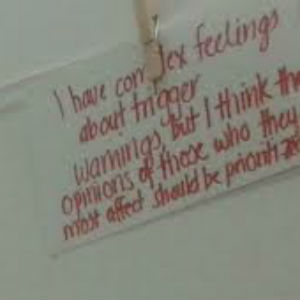 Just two weeks after the exhibit was installed, the number of responses submitted to CAP “almost doubled,” she said: Both students and professors have told her how much they appreciate the exhibit and the dialogue it has fostered.
Just two weeks after the exhibit was installed, the number of responses submitted to CAP “almost doubled,” she said: Both students and professors have told her how much they appreciate the exhibit and the dialogue it has fostered.
The attention given to the wall “seems to confirm what the great radical [and civil rights leader] Ella Baker believed: radical change begins in the process of discourse,” Samuelson said.
Samuelson did not say what “radical change” CAP was hoping would result from the trigger-warning wall or how it squared with her portrayal of the wall as an attempt to foster dialogue, rather than change political or social mores.
RELATED: Student art exhibit insists ‘trigger warnings are REAL and should be RESPECTED’
RELATED: What passes for microaggressions at Columbia: White male professors, ‘stressful situations’
Like The College Fix on Facebook / Follow us on Twitter
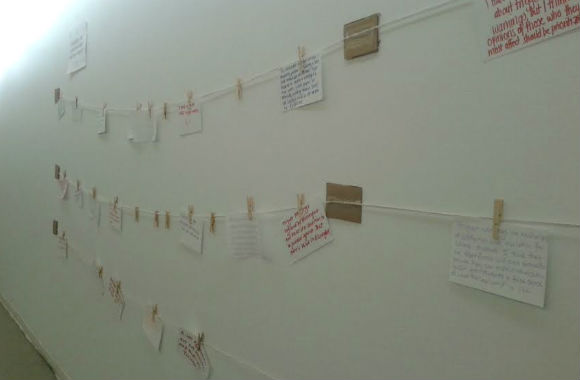
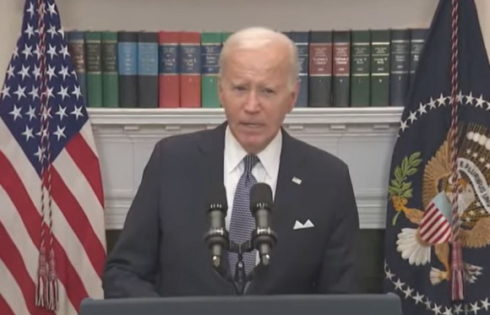
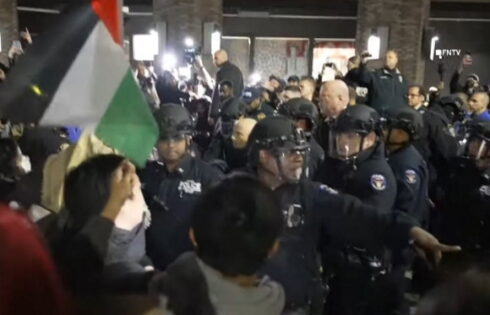


Please join the conversation about our stories on Facebook, Twitter, Instagram, Reddit, MeWe, Rumble, Gab, Minds and Gettr.